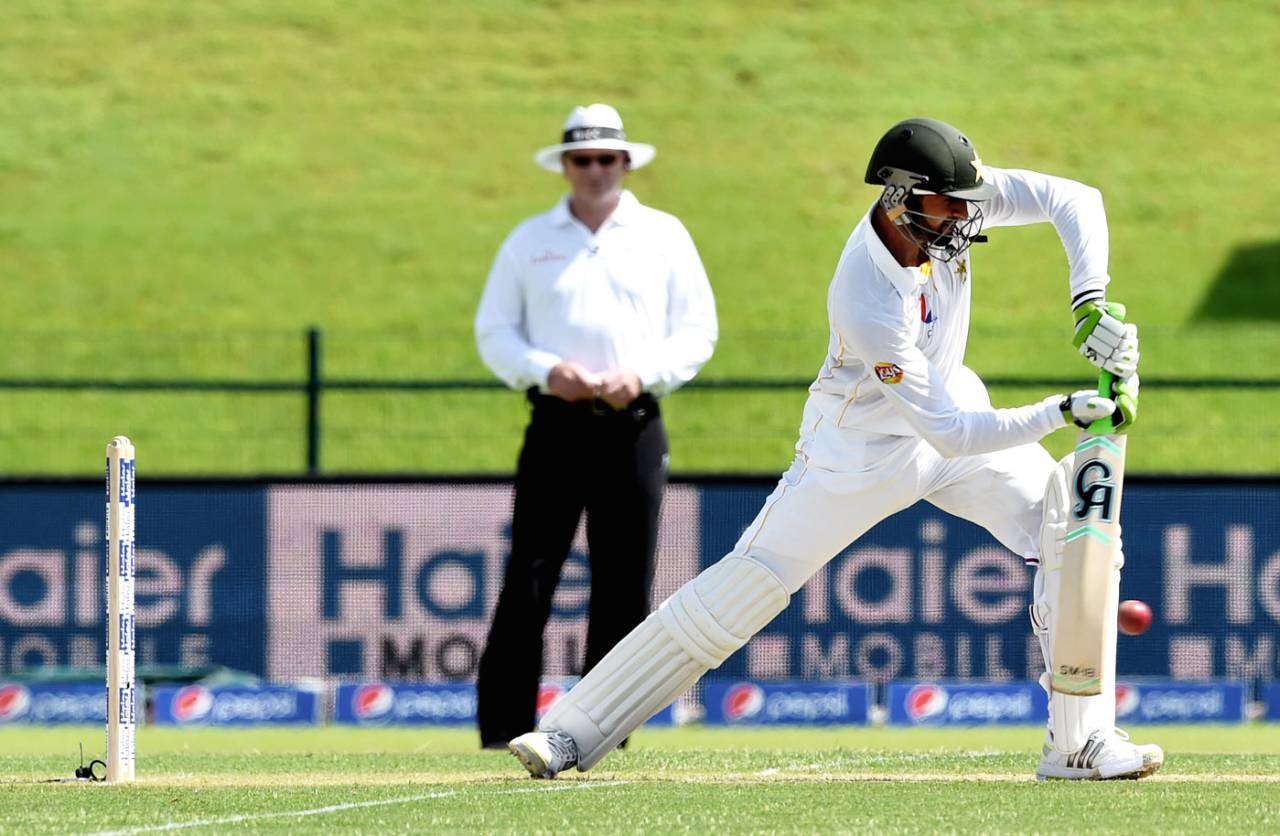It's rare to find a perfect cricket pitch - one that satisfies both batsmen and bowlers - but surfaces like the one produced
in Abu Dhabi for the first Test between Pakistan and England do the game no favours.
Though the game came to life on the last day, dead pitches like this one, which by and large give the bowlers little chance of success, encourage batsmen to dawdle in the name of posting a huge first-innings total. Test cricket - which is in dire need of nurturing - needs huge first-innings scores in the same way a motorbike requires an ashtray. A huge total by the team batting first generally leads to one of two results: a grinding response like Alastair Cook's incredible feat of endurance in seeking a draw, or a complete capitulation by the opposition, ending in a blowout victory.
Games like the one
at the Premadasa Stadium in 1997-98, where India's 537 for 8 (centuries by Sachin Tendulkar, Navjot Sidhu and Mohammad Azharuddin) was obliterated by Sri Lanka's 952 for 6 (a triple-century by Sanath Jayasuriya and a double by Roshan Mahanama) become an exercise in futility and statistical self-gratification.
Most right-minded fans want a two-pronged contest - the one between bat and ball and the other between two engaged teams - with their favoured side winning in a close finish.
Good curators are like players; they have pride in their performance and aim to produce a surface that is fair to the batsmen and bowlers of both teams
Even a contest at the other end of the scale, like that between India and Australia on a difficult pitch
at the Wankhede Stadium in 2004-05, which resulted in two of the four totals amounting to only around 100 each, did have the redeeming feature of providing a result. Nevertheless, any pitch that allows a front-line bowler, never mind a part-timer like Michael Clarke, to take 6 for 9 isn't a good one.
Which brings up the question: what is the definition of a good pitch?
The practical answer is often supplied by the best curators. When asked before a game what they are hoping for, they reply: "I'd like to see a result late on the fifth day."
Notice they never say which team they want to win. Good curators (or groundsmen) are like players; they have pride in their performance and aim to produce a surface that is fair to the batsmen and bowlers of both teams. That's why the preparation of a pitch should be solely in the hands of the curators or groundsmen, with no input from players or administrators, both of whom have a vested interest in the state of the surface.
Les Burdett, a long-time curator at the picturesque Adelaide Oval, was one of those who sought a result after tea on the fifth day. He often achieved his aim, but even when he fell agonisingly short it usually provided great excitement.
The match
in 2012-13, where Faf du Plessis' marathon rearguard action saved the match for South Africa, provided as much drama and tension as Australia's dramatic last-minute Ashes victory had done at the same ground in 2006-07. The moral of the story: provide good pitches and the best players will usually produce decent entertainment.
One of the side benefits of the increase in short-form cricket has been the increased haste in Test match batting. Add to that regulations that allow time lost to weather to be made up, and the percentage of results achieved in Test cricket is greatly improved.
If administrators are serious about promoting Test cricket, they should come down hard on any player, coach or official who tries to influence the preparation of a pitch. And while they are at it, they should threaten to take Tests away from administrations that conjure up lifeless pitches; if they transgress a second time, follow through on the threat.
For both teams, the pitch is an important participant in every Test. Producing a good surface is just as crucial to the contest as the performance of any individual player.

